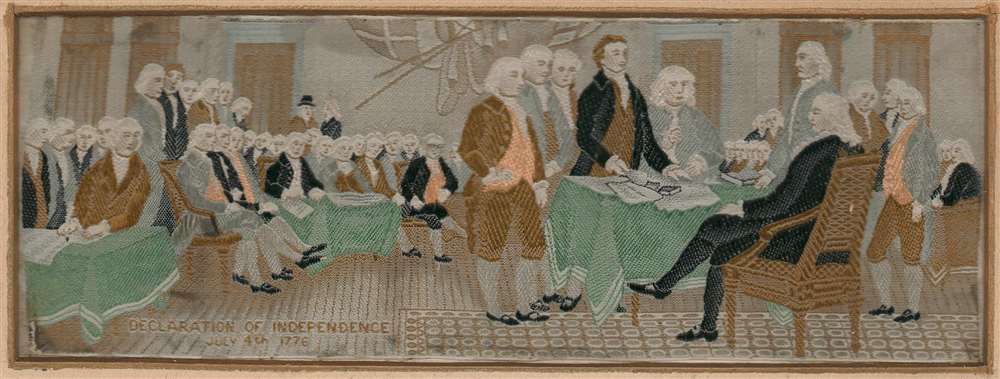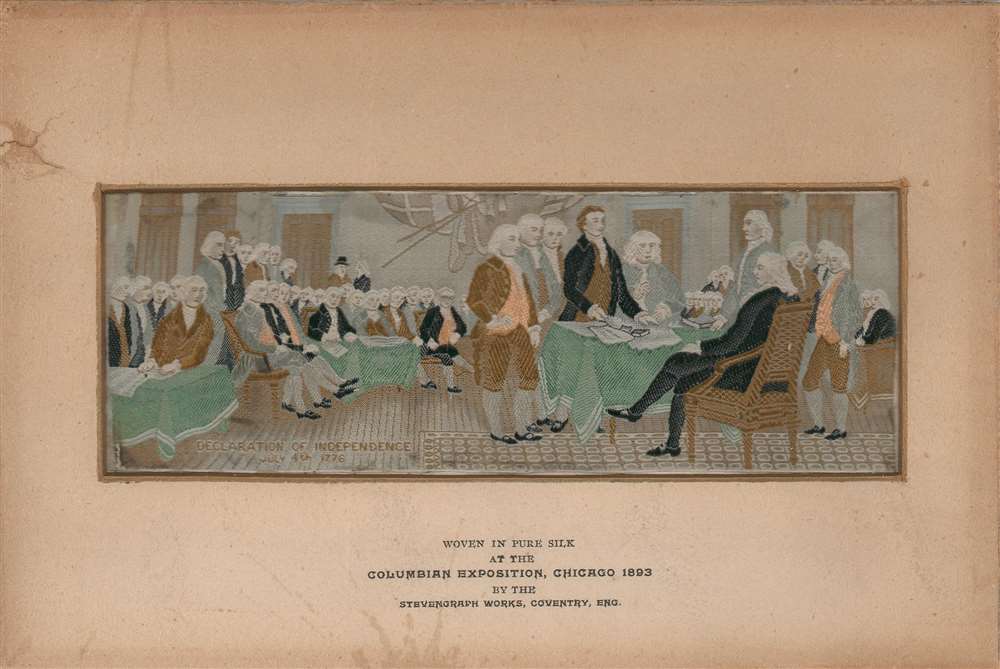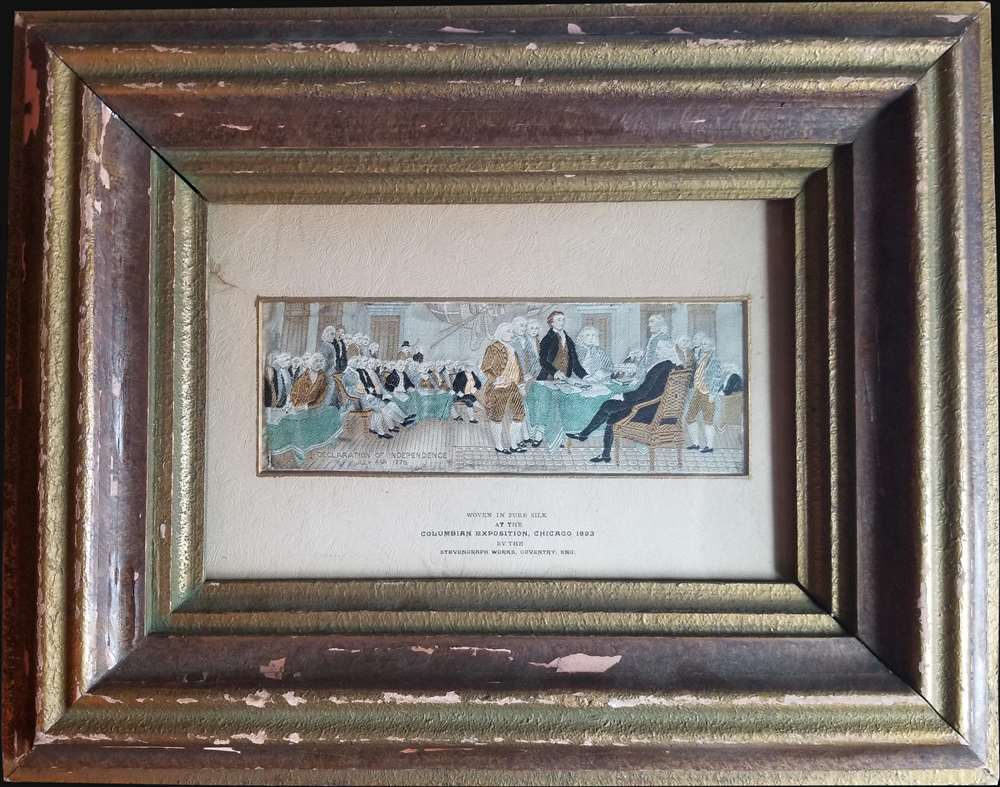1893 Stevengraph Woven Silk View of the Declaration of Independence Signing
DeclarationofIndepence-stevengraph-1893
Title
1893 (dated) 2.5 x 7.25 in (6.35 x 18.415 cm)
Description
Stevengraphs
Stevengraphs were invented by Thomas Stevens (1828 - October 24, 1888) after the ribbon weaving industry in Coventry, England collapsed following the signing of the Cobden-Chevalier Treaty. Stevens used his experience and expertise with the Jacquard loom to weave colorful pictures in silk. He had four designs in production by 1862 and over 900 by the late 1880s. They were sold as bookmarks, greeting cards, and, eventually, framed pieces of art. Stevengraphs fell out of fashion in the early 20th century, but experienced a brief resurgence during the 1930s Victoriana trend. The Stevengraph factory was destroyed by Nazi bombers during the Coventry Blitz of November 14, 1940. It was believed all of Stevens' records were also lost at that time. However, in the late 1950s, Henry Stephens, one of Thomas Stevens's descendants, revealed that he had saved one of the company's pattern books the night before the factory's destruction. Today that pattern book is part of the collection at the Herbert Art Gallery and Museum.The Columbian Exposition
The 1893 Columbian Exposition or Chicago World's Fair was a pivotal moment in the history of the United States. Chicago won the right to host the World's Fair over New York, Washington D.C., and St. Louis. During its six-month run, nearly 27,000,000 people, roughly half the population of the United States at that time, attended the fair. Its numerous displays and exhibits established conventions for architecture, design, and decorative arts, in addition to initiating a new era of American industrial optimism. The layout and design of the fair was the work of Daniel Burnham and Frederick Law Olmsted, the genius behind New York City's Central Park and Brooklyn's Prospect Park, among others. Most of the fair was designed in the Beaux Arts tradition, a popular movement in Paris that was quickly gaining global momentum. In the years following the fair, this influential architectural style redefined the cityscape of Chicago, Boston, New York, and many other prominent American cities.Publication History and Census
This view was created by the Stevengraph Works at the Columbian Exposition in Chicago in 1893. It is accompanied by its original board, which measures 9 x 6 inches, as well as its original frame, which measures 11.25 x 14.25 inches. This view is scarce on the market and is not cataloged in OCLC.Cartographer
Thomas Stevens (1828 - October 24, 1888) was a British weaver who is most famous for inventing the stevenograph, a woven silk picture. Born in Foleshill, north of Coventry, England, Stevens lived in Coventry for most of his life. Coventry was the center of the ribbon weaving industry, and Stevens worked for Pears and Franklin, a local ribbon weaving firm, as a youth before opening his own ribbon weaving company in 1854. However, after the signing of the Cobden-Chevalier Treaty in 1860 which introduced free trade into the industry, the local ribbon economy collapsed, which in turn led to massive unemployment in Coventry. Stevens responded to the crisis by taking advantage of his experience experimenting with Jacquard looms and began creating new products. He devised a way of programming the looms to create colorful pictures out of woven silk. He had developed four designed by 1862 and began selling the products between six pence and fifteen shillings each in an attempt to appeal to the mass market. He was calling his creations 'Stevengraphs' by 1875. He moved to London in 1878, and began mounting Stevengraphs as pictures. His works were exhibited in the United States, Holland, and France, and won numerous awards. He had developed over 900 designs by the late 1880s. Stevens died in 1888 following a throat operation. The firm continued operating after Stevens death under the leadership of one of his sons, Thomas Inger Stevens, until his death in 1908. After Thomas Inger Stevens passed away, the firm became a limited corporation and production continued until 1940, when bombs dropped by the Luftwaffe destroyed its factory in Coventry. More by this mapmaker...






